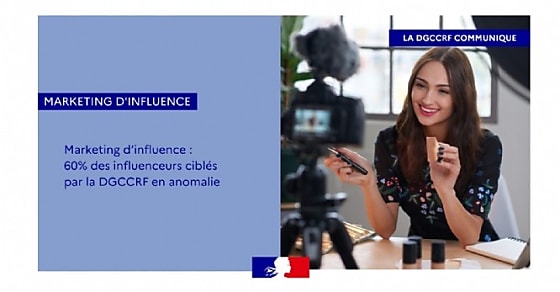Video is on its way to becoming the medium of choice for social platforms, and tech giant Meta is increasingly integrating this format into its various platforms. Reels have been introduced on Instagram and Facebook, a move that many see as an imitation of TikTok’s hugely popular short video format…
Unsurprisingly, the contestants are taking inspiration from TikTok. Even if it’s still on the charts sixth most used social network in the world, the platform has seen phenomenal growth in a short time. She claims monthly 1 billion active users worldwideversus 381 million in 2019and now it almost has 15 million users in France alone.
For brands, this latest shift in content focus is part of what’s becoming a familiar pattern. As user habits change and new social champions emerge, key players change their behavior, as with the evolution from news feeds to stories. This time around, though, the ability to predict the next chapter allows marketers willing to adapt to go ahead and get started now. realign their strategies.
Consider human nature
TikTok’s meteoric rise has largely been fueled by the pandemic; the TikTok user base in France tripled between 2020 and 2021 with stranded users looking for connection and escape. But the app itself has a strong consumer appeal, as evidenced by its rapid and continued growth: it was the app no longer downloaded last year, with 656 million downloads, and is part of the the 10 best French applications on the Play Store and the Apple Store.
Initially conceived as a hub for dance videos and lip syncing, the platform has quickly grown into an entertainment powerhouse. At the heart of this power is the app’s ability to anticipate user preferences and tap into the workings of their minds. TikTok’s recommendation algorithm, which learns individual preferences through observation as humans do, is already recognized as its prime asset to grab users attention.
As new users sign up, algorithms analyze their engagement with initial content from broad categories and can target unique interests the two only. Subsequently, TikTok can begin serving increasingly personalized content, using micro-targeting to ensure content relevance and continued usage, and gathering additional insights that it can leverage to make experiences more engaging and relevant in a closed feedback loop . In addition to its ability to be shared on other networks, it is understandable why TikTok has such an ability to attract and keep users engaged and why other platforms want to follow suit.
Take advantage of advertising opportunities
TikTok’s large, devoted, and happy audience is also appealing to brands. While the highly targeted delivery of paid and organic advertising has potential, as well as great reach, understanding how to capitalize on these opportunities is relatively recent.
There is a growing awareness of the need to cover the basics of creativity, such as creating advertising content for portrait orientation, using visual and sound effects to give depth to content and ensure fast-paced stories. But, while very helpful in ensuring relevance and authenticity, this knowledge is not enough for brands looking to maximize their visibility and impact.
TikTok’s algorithm is designed to consider engagement signals such as watching the video through to the end, ensuring ads end up in content recommendations requires a deep understanding of what captures consumers’ attention. In other words, brands need granular insights into creative impact.
Work on the TikTok scene
Social media isn’t the only evolving landscape. Creative assessment tools are developing rapidly thanks to advances in artificial intelligence (AI). For example, computer vision systems can now automatically identify each element of a video, frame by frame, and evaluate its impact on consumer engagement, including the facial expression and gaze of models in advertisements, sets, texts, objects and sounds.
By assembling multiple types of data, including past and present media performance data from social platforms and overlaying performance metrics with creative data, artificial intelligence and machine learning can produce a detailed picture of the creative elements that have a impact on key KPIs. This granular analytics enables marketers to develop smart, optimized creative video content tailored to best practices for their specific brand and improve performance. The right approach for each brand will be unique, and applying intelligent creativity has provided invaluable insight into the big difference small creative elements make.
Mixed Feelings: Using Emotions Wisely
In an environment where ads only have seconds to pique users’ interest or lose their audience, it’s no surprise that the emotions portrayed by models have a significant effect on viewers. But what is interesting is the nuance.
Analysis of major brand campaigns has shown that six-second view rates are up to 1.7 times higher when actors in ads emphasize strong emotions such as surprise in the first few seconds than when they wear neutral expressions. On the other hand, having a range of emotions, four or more, can lead to higher conversion rates of 3.3%.
But users are also sensitive to excessive connection. Clickthrough rate (CTR) increase is 31% higher when models’ faces take up less than 20% of the frame, and CTRs are also higher when watching viewers directly for less than half of the video. Users therefore prefer ads that convey emotion, but without excessive intimacy.
Simplicity and clarity attract users
Likewise, different uses of audio lead to different responses; therefore it is important for brands to think about the results they want to achieve and select the audio assets accordingly.
Ads that use only music or voice-overs, for example, see their brand equity increase by 51%, highlighting the preference for simple, informative audio. The evaluation also showed that the same audio or voice-over approach results in up to 1.6x higher CTR. It’s clear that fast-scrolling users don’t have time for overly complicated and confusing ads, so brands need to keep content simple and relevant.
TikTok seems to have a magic formula for success and giving users what they want, but that method is constantly changing depending on the content users are engaging. As the wider social scene tries to follow the trend for short videos, it’s imperative that brands have an accurate, in-depth, and continuously updated look at what’s working. Tracking creative assets and their effect is essential to ensure brands’ efforts, whether paid or organic, strike a chord and have a chance to join the TikTok cycle.
About the author
Prune Nouvion, Head of Southern Europe, VideoMob : Previously Director of Western European Sales for Spotify and Director of French Sales for LinkedIn, Prune has deep experience in digital marketing and a powerful network in this sector. Based in Paris as VidMob’s Southern Europe Sales Director, Prune leads the sales teams tasked with supporting advertisers and agencies. VibMob, world leader in creative intelligence, maximizes advertisers’ marketing investments by optimizing their creative assets present on all social networks.








Comments
Post a Comment